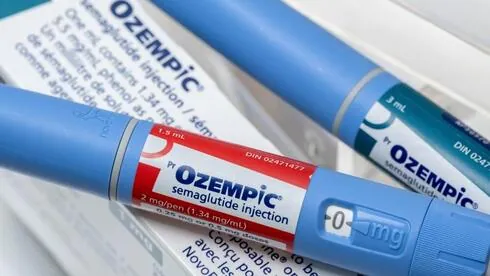
Ozempic: The Future of Weight Loss Meets Technology and Economics
2025-04-05
Author: Sarah
The digital revolution is reshaping the field of metabolic medicine in unprecedented ways. The recent popularity of GLP-1 weight loss medications, such as Ozempic, is driving significant medical and economic transformations. However, this wave of change doesn’t stop there; it is being amplified by the rise of advanced metabolic monitoring technologies, which encompass everything from real-time sensors to smart devices and AI-driven algorithms leveraging real-world data.
These technologies, when integrated into weight loss programs, offer personalized treatment plans, helping individuals to maintain lean muscle while achieving their weight loss goals. This modern approach merges scientific research, technological innovation, and personalized care, resulting in a holistic strategy to tackle weight management effectively.
Recent studies have illuminated the broader implications of metabolic health, revealing that impaired metabolism is tied to chronic diseases like type 2 diabetes, cardiovascular conditions, and systemic inflammation. This realization underscores the importance of precise metabolic monitoring, which not only supports weight loss but may also act as a critical early warning system for various health risks. The central inquiry remains: can the synergy of medical advancements and technology lead to improved health outcomes for the masses?
Next-gen metabolic assessments now utilize technology that can track real-time energy expenditure and the body’s usage of fats, carbohydrates, or proteins as fuel, all while influencing metabolic rates. Once a realm reserved for laboratory settings, these advancements are now becoming widely accessible to both healthcare professionals and patients alike through wearable sensors and portable metabolic analyzers. These innovations are laying the groundwork for personalized nutrition and fitness strategies that cater specifically to individuals.
While GLP-1 medications have shown promising results, they come with their own set of challenges, including gastrointestinal issues, potential muscle loss, high costs, and risk of weight regain after treatment. Yet, the integration of technological tools could help alleviate these concerns. Initial data indicates that patients equipped with metabolic monitoring technology may experience more effective weight management and enhanced muscle preservation, along with better-targeted dietary and lifestyle guidance.
A particularly notable benefit of this integrated approach is the capacity to adjust medication dosages according to the individual’s real-time physiological conditions. This adaptive strategy not only minimizes adverse side effects but also has the potential to lower treatment costs. Evidence suggests that continuous monitoring heightens patient engagement—a vital element in fostering long-lasting lifestyle changes.
The Emergence of a New Market
Alongside this medical revolution spearheaded by GLP-1 drugs, an expansive economic market is beginning to take shape. According to the CDC, obesity costs the U.S. healthcare system nearly $173 billion each year. In 2023, around 4 million U.S. adults—approximately 1% of the adult population—were regular users of GLP-1 medications. Projections indicate that by 2030, this figure could soar to 13 million (4.8%), with up to 48 million Americans (17%) potentially trying these treatments.
As demand surges, pharmaceutical companies are witnessing a remarkable uptick in interest. Concurrently, governments, insurers, and employers are beginning to understand the economic benefits of fostering healthier populations through effective weight management strategies. However, the potential beneficiaries extend beyond pharmaceutical companies, as a comprehensive ecosystem is emerging around these medications, encompassing complementary apps, metabolic monitoring devices, digital support communities, and niche clinics. This clear trend signals a significant pivot in healthcare from reactive disease management to proactive, personalized prevention, with consumers spearheading this movement.
The implications of this shift stretch beyond clinical benefits; they could reshape the entire structure of the healthcare economy. Nevertheless, it is crucial to acknowledge that while these innovative technologies show immense promise, they are not yet integral to standard medical practice. Barriers such as cost, necessary professional oversight, and adherence to regimes persist. However, the trajectory of digital health suggests that what may appear complex and exclusive today can evolve into widely available and user-friendly solutions in the future.
In summary, as Ozempic and similar medications gain traction, the integration of advanced monitoring technologies marks a pivotal moment in the battle against obesity and related health issues. The confluence of health and technology is not just a trend; it is a burgeoning revolution that heralds a new era in personalized healthcare. Stay tuned as we continue to unveil the ongoing evolution in weight management and health technology!




 Brasil (PT)
Brasil (PT)
 Canada (EN)
Canada (EN)
 Chile (ES)
Chile (ES)
 Česko (CS)
Česko (CS)
 대한민국 (KO)
대한민국 (KO)
 España (ES)
España (ES)
 France (FR)
France (FR)
 Hong Kong (EN)
Hong Kong (EN)
 Italia (IT)
Italia (IT)
 日本 (JA)
日本 (JA)
 Magyarország (HU)
Magyarország (HU)
 Norge (NO)
Norge (NO)
 Polska (PL)
Polska (PL)
 Schweiz (DE)
Schweiz (DE)
 Singapore (EN)
Singapore (EN)
 Sverige (SV)
Sverige (SV)
 Suomi (FI)
Suomi (FI)
 Türkiye (TR)
Türkiye (TR)
 الإمارات العربية المتحدة (AR)
الإمارات العربية المتحدة (AR)